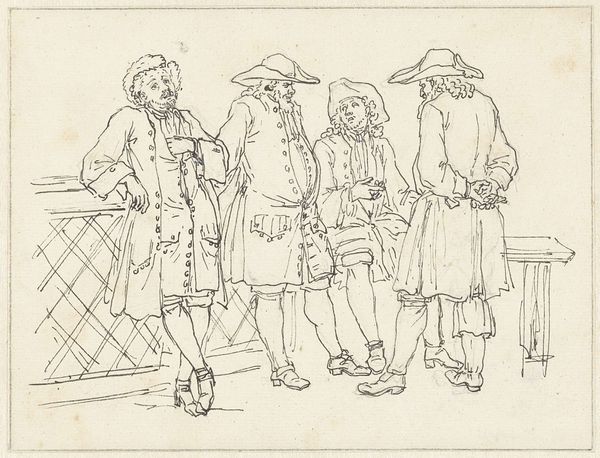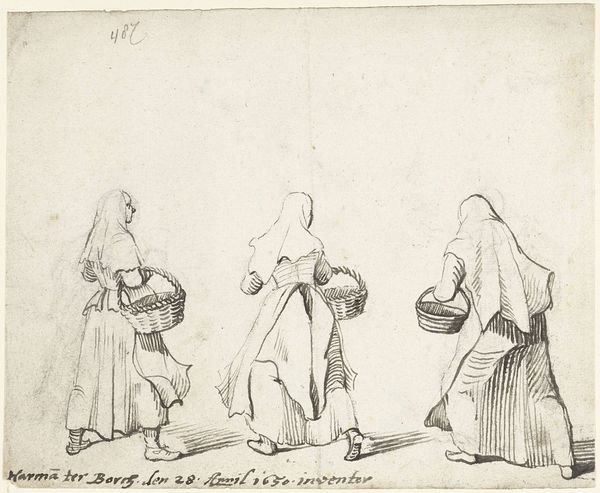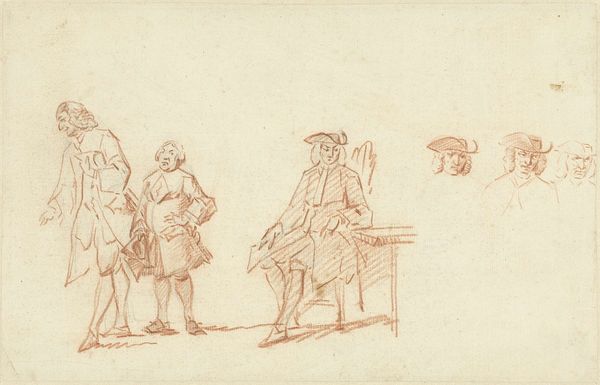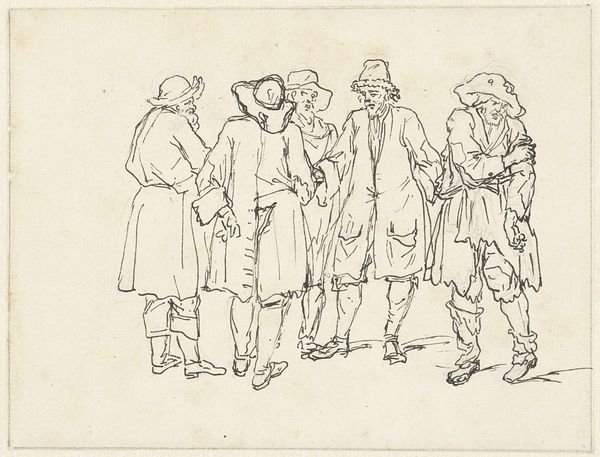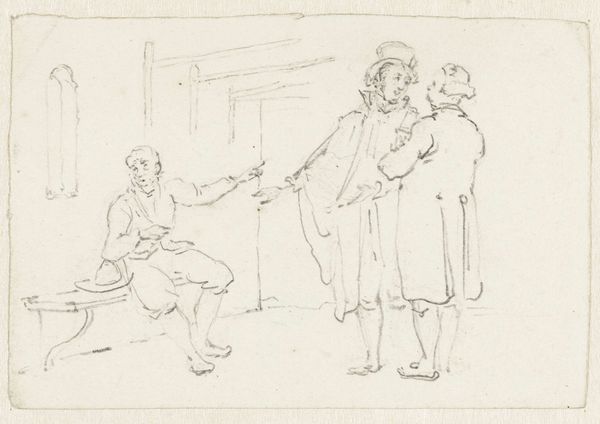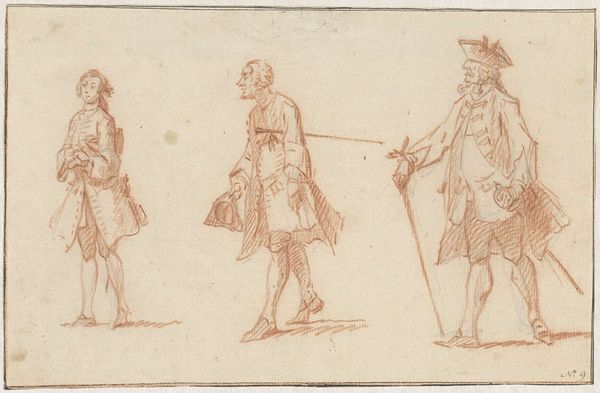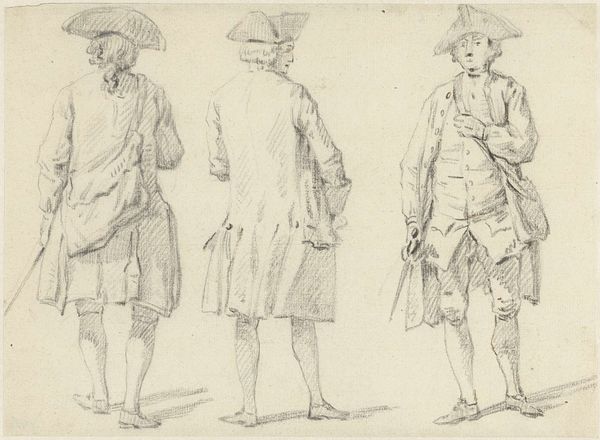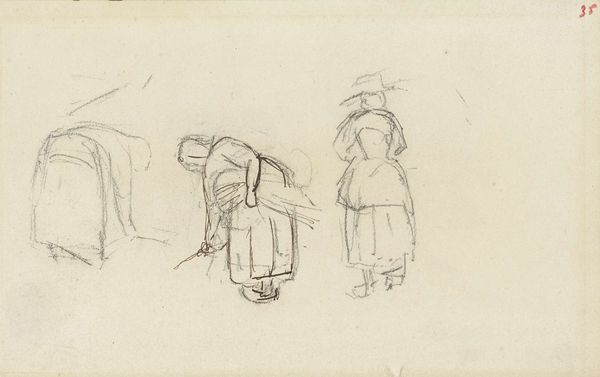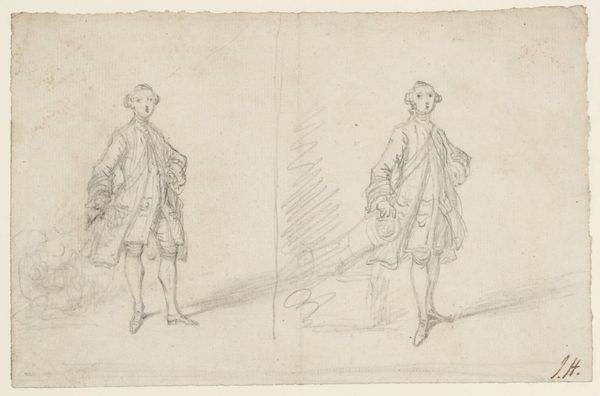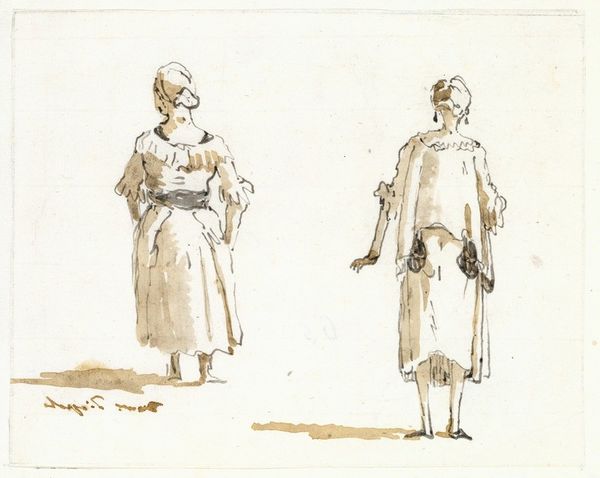
Schetsen van staande mannen, twee met een mantel over het hoofd 1683 - 1733
0:00
0:00
drawing, pen
#
drawing
#
comic strip sketch
#
imaginative character sketch
#
quirky sketch
#
baroque
#
figuration
#
personal sketchbook
#
idea generation sketch
#
sketchwork
#
sketchbook drawing
#
pen
#
genre-painting
#
storyboard and sketchbook work
#
fashion sketch
#
sketchbook art
Dimensions: height 130 mm, width 171 mm
Copyright: Rijks Museum: Open Domain
Editor: So this sketch, "Schetsen van staande mannen, twee met een mantel over het hoofd," attributed to Bernard Picart and dating from between 1683 and 1733, is currently held at the Rijksmuseum. Drawn with a pen, it's giving me real fashion design notes or stage costume development vibes. The draped fabric seems very important to the figures, it’s like they’re displaying wealth, privilege. What do you make of it? Curator: The treatment of the drapery is key here. Picart, through his use of line, calls attention to the *making* of the garments. We see, essentially, the raw materials of social performance. Look closely at the left figure: isn't that more about the display of fine material and elaborate trimmings, arranged and suspended by the wooden furniture, than the person who might wear it? Editor: I see what you mean. It's like the fabric *is* the person, or at least a symbol for their status. Curator: Exactly! And it leads me to think about the social structures encoded in clothing manufacture and trade during that era. Think about the labour required, the consumption encouraged... the Dutch Republic was a mercantile hub. These are not simply fashion sketches; they’re documents hinting at the economic engine of their time. Editor: That's fascinating! I hadn't considered that. I was too focused on the aesthetic of the figures themselves. It really opens it up when you consider how it speaks to a whole social structure. Curator: Precisely. Paying close attention to the labor and consumption of materials unlocks a whole new reading of a simple sketch, transforming it from a study of aesthetics to a comment on a material-driven society. Editor: This makes me want to go research the textile industry in the Netherlands during the Baroque period! Thank you for offering a materialist perspective, I definitely found some new insights today. Curator: It was my pleasure, remembering that the sketch offers a look into material culture definitely shifts how we view these figures.
Comments
No comments
Be the first to comment and join the conversation on the ultimate creative platform.
